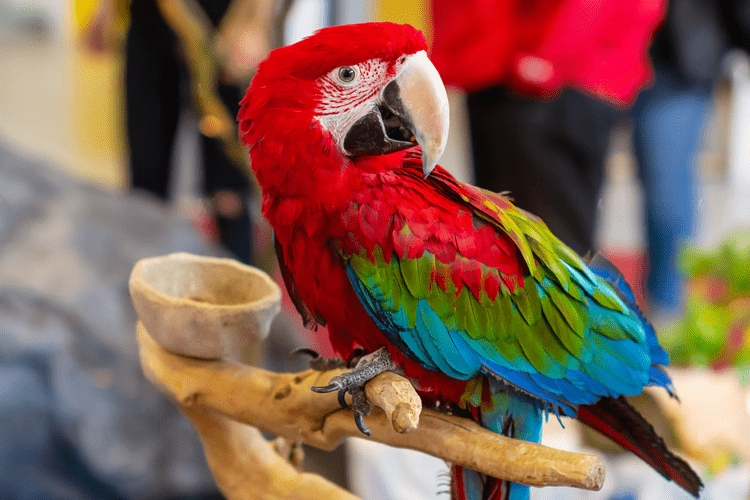
Nothing is more exciting for bird owners than hearing their beloved birds talk. Many bird species, particularly parrots are known for their ability to mimic the sounds of humans and animals. However, it takes a lot of patience, praise and consistency to train the birds to mimic words and phrases.
In this blog, you will see 7 simple yet highly effective strategies to train your birds to talk, so that you can enjoy meaningful interactions with them.
Here are those strategies,
-
Pick a Bird That Can Learn to Talk
Not all birds can talk. This is why you should choose a bird species that is capable of mimicking human and animal sounds. Some of the bird species that talk are Quaker Parrots, Budgies, Cockatiels, Alexandrines etc. You should also ensure that the bird is healthy, well-socialised and relaxed around people as these are important factors in making them talk.
-
Who Talks More: Male or Female Bird?
Although it’s possible to teach most parrots to speak, male birds tend to be easier than females. Also, it is best to start teaching them when they are young and receptive. You will see your bird starting to mimic the words and sounds they hear from their surrounding. As you practice regularly, you will see their words starting to get more and more clear. Always remember this, consistency and repetition are keys to winning this phase.
-
Create a Positive Learning Space For Your Bird
An important factor in teaching your birds to talk is to create an ideal learning environment for them. Remember, birds are social creatures who thrive in those places where they are safe and comfortable. Firstly, ensure that your birds have a spacious cage with toys and perches to keep them happy and relaxed.
-
Start With Simple, Short Words
While training your birds to talk, it is important to start with simple words and phrases. You can start with words like “hello” and “come in” as these are easy words for the birds to pronounce. To teach them to say these words, repeat them frequently throughout the day using a clear and consistent tone. You can also use visual cues, such as pointing to your mouth while saying the words or holding up the picture of the word, to make them understand what you are saying.
Once your bird becomes comfortable with these simple words, you can gradually introduce complex words and sentences.
-
Use Repetition and Praise For Training
ords and praising the birds during training are catalysts in making the birds talk. What you need to do is repeat the same words frequently throughout the day, using a clear and consistent tone. Once your birds say the word back, reward them with praise, treat or petting.
This technique is called positive reinforcement and it encourages your birds to learn and speak new words. Remember you need to be patient and consistent during training, as it can take several weeks or even months for the birds to begin talking.
-
Try the Associated Phrase Approach
One fantastic method is to link words with actions or objects. For example, you can say “come”, when you are lifting your bird onto your hand, or “seed” when you give your bird a seed to eat. Consistently repeating these gestures with the corresponding words helps your birds to remember them.
Also, giving your birds positive reinforcement, such as traits or praise when they repeat these words can encourage them to continue talking.
-
Stay Patient and Consistent
Teaching your birds to talk is a process that will take enough time and patience. This is why you should stay consistent in your training and not get discouraged if your bird doesn’t start talking right away. As mentioned above, it may take weeks or even months for them to start speaking. With consistency and patience, your bird will eventually become an excellent talker and a great companion to your family.
In a Nutshell,
You have seen 7 highly effective tips that will help you train your bird to talk. Having said that, you can’t force a bird if it is not able to speak, which can be due to various intrinsic reasons. If you think your bird is taking way too much time to speak, you can try something a little bit easier, like whistling. Many birds find whistling much easier than talking and most will be willing to try whistling due to this very reason.
As said before, with love, patience and consistency, your bird will surely be able to mimic something.



